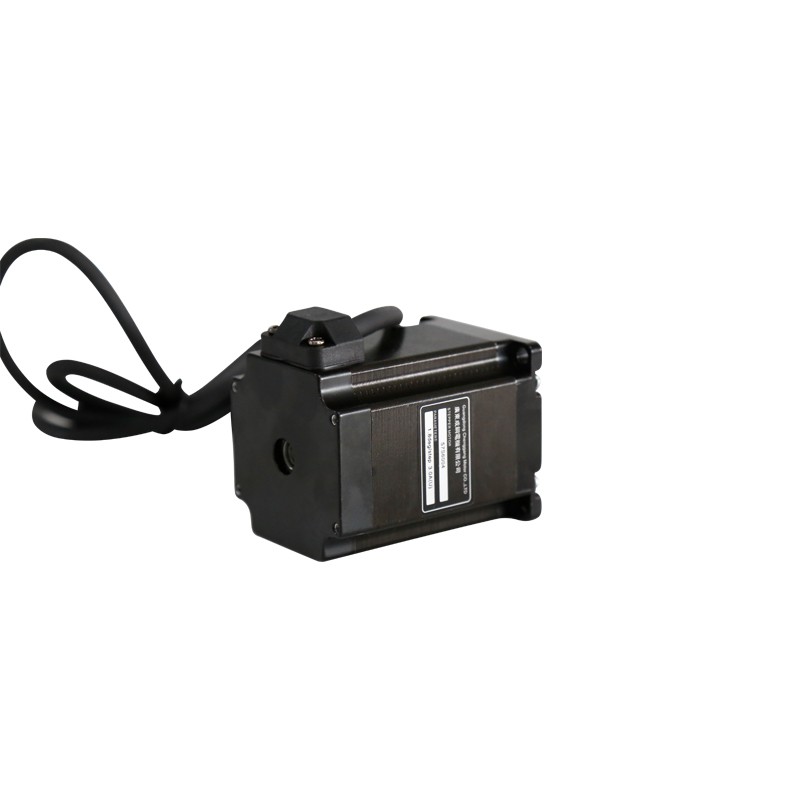Source:Industry News Release time:2022-07-07 Clicks:0 Popular:Reduction motor manufacturer

Stepper motor manufacturers introduce the main parameters and characteristics of stepper motors
1. Step error
It refers to the difference between the actual measured step angle and the theoretical step angle when no load is applied. It reflects the accuracy of the stepper motor's angular displacement.
The step error of domestic stepper motors is generally within the range of ±10′ to ±30′, and stepper motors with higher precision can reach ±2′ to ±5′.
2. Maximum static torque
It refers to the maximum external torque that the stepper motor can withstand when a certain phase is always energized and in a stationary state, that is, the maximum electromagnetic torque it can output. It reflects the braking capacity of the stepper motor and the load capacity during low-speed stepping operation.
3. Starting torque frequency characteristics
It refers to the corresponding relationship between the maximum step input pulse frequency (also called starting frequency) and the load torque that the stepper motor can accept when there is external load torque without losing steps.
4. Start inertia frequency characteristics
It refers to the relationship between starting frequency and moment of inertia when a stepper motor drives a pure inertia load.
5. Operating torque frequency characteristics
It refers to the relationship between the output torque and the input pulse frequency when the stepper motor is running. When selecting a stepper motor, the operating point corresponding to the actual application operating frequency and load torque should be below the operating torque-frequency characteristic to ensure that the stepper motor operates normally without losing step.
6. Stepping operation and low-frequency oscillation
When the input pulse frequency is very low, if the pulse period is longer than the transition process time of the stepper motor, the stepper motor will be in a step-stop running state. This operating state is called step operation. Stepper motors all have a low natural frequency. When the step operating frequency or low-speed operating frequency is equal to or close to the natural frequency, resonance will occur, causing the stepper motor to oscillate. This phenomenon is called low-frequency oscillation.
Methods used to avoid low-frequency oscillation phenomena:
One is to make the operating frequency avoid the natural frequency, and the other is to change the natural frequency by adjusting the damper on the stepper motor when the former method is not allowed.
7. Maximum phase voltage and maximum phase current
They refer to the maximum power supply voltage and maximum current flowing in each phase winding of the stepper motor respectively.
Recommended reading
Application fields of right angle planetary reducer
Application advantages and characteristics of linear screw stepper motors
Related Information
CGX115
2021-01-13Stepper motor
2020-12-21Stepper motor
2020-12-21Speed motor
2020-12-21CGX142
2021-01-13Planetary reducer
2021-04-15Planetary reducer
2021-04-15CGF-042L2-16-P2
2020-12-21Planetary reducer
2021-04-15Planetary reducer
2021-04-15Speed control device
2021-01-13CGXZK060
2021-01-13Planetary reducer
2020-12-21CGX042
2021-01-13CGXZ042
2021-01-13Planetary reducer
2020-12-21Stepper motor
2020-12-21CGZF-042L1-5-P2
2020-12-21